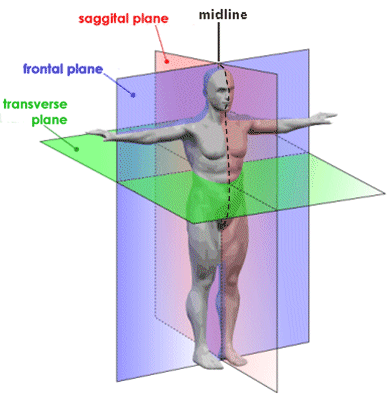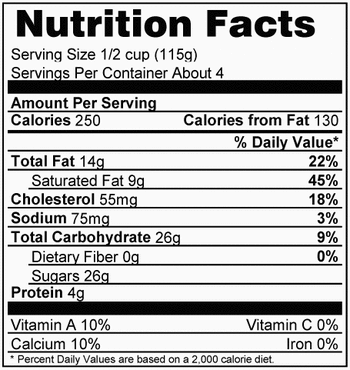Hi all
Friday again, hope you had a great week. This week I wanted to discuss the importance of a balanced exercise program. Now I think most of you
will be thinking that I mean balanced in the way that you are not doing the same thing everyday. Yes OFCOURSE this is true, but we all already know this and I won't waste you time by writing about it.
What I am taking about is.....
Is you workout balanced and are you training your body in all the body's PLANES (not aeroplanes)?
I imagine that if you are not working in the fitness industry you might not have a clue what I mean.... which is great as hopefully by the end you will.
OK so I will cover
Introduction
What are the Planes of the body
Importance of training in all Planes
How a balanced workout might look like.
Introduction-
When we work out we want to make sure that the program we carry out is safe,
efficient and balanced in orde to prevent injuries. You may wonder how do we do this.
Warming up
Cooling down
Strecthing
All basic stuff but as a Personal trainer I also strongly recommend training in all three planes of motion. When I train my clients and prepare their workouts I ensure that each workout is balanced and there is no dominent plane being utilised where possible.
So what are the Planes called?
FRONTAL
PLANE
SAGGITAL PLANE
TRANSVERSE- HORIZONTAL PLANE.
What are the planes of the body
OK so we know there names but lets look at how moving in a particular plane may look like. I want you visualise two panes of glass. For each Plane they will allow movement in one way.
FRONTAL PLANE- imagine one pane at your front and one at the back
of the body. No forward movement or rotational movement would happen, therefore all movement would be from side to side.
EG- Lateral lunges, Lateral raises, side steps shuffles etc
SAGGITAL PLANE- imagine two panes of glass by your side only allowing movement forward. This typically is the most dominant plane that people move in.
E.G- Squats, Forward lunges, Bicep curls, Running etc.
TRANSVERSE- HORIZONTAL PLANE- OK for this one imagine one pane of glass splitting you body at the belly button and the only movemnts involve twisting.
E.G Russian twist, think or any swinging action, hitting a tennis ball etc
Importance of training in all planes.
So hopefully now you have a better understanding of the three planes and the movements that happen.
So you might wonder why do we need to train in all three?
Well I ask the question, what do you think will happen if you repeatedly do the same movement over and over again?
Not only will the body get used to it, but also think about the stress that
is constantly going through the same muscles in the same plane, over time this
could potentially lead to injury. Not the ideal situation! However if your
program utilises all planes this will allow for other assisting muscles to be
recruited leading to an all over balance and decreased risk of injury.
Question
So how many peoples Leg workout looks like this?
Squats
Deadlifts
Lunges
Leg Curls
Leg Extensions
Question
What do they all have in common?
Movement in the Saggital Plane :)
So how would and should a balanced leg workout look like
Lets use the fantastic TRX as our training tool
Workout
TRX Squats- Movement in the Saggital Plane
TRX Lateral Lunges-
Movement in the Frontal Plane
TRX Curtsie Lunge with Knee over Movement in
the Transverse Plane
Easy!!!! Hopefully
I hope that this short article made a little sense and that you can put some of it into pratice and maybe even make you evaluate your own program and get creative with some new moves.
If you have any questions please do not hestitate to contact me.
Well Thats it for the next TWO WEEKS :o
I will be travelling to do some more training, one of which I will wsrite about on my return :)
Until then
Stay Healthy
Jill
Friday again, hope you had a great week. This week I wanted to discuss the importance of a balanced exercise program. Now I think most of you
will be thinking that I mean balanced in the way that you are not doing the same thing everyday. Yes OFCOURSE this is true, but we all already know this and I won't waste you time by writing about it.
What I am taking about is.....
Is you workout balanced and are you training your body in all the body's PLANES (not aeroplanes)?
I imagine that if you are not working in the fitness industry you might not have a clue what I mean.... which is great as hopefully by the end you will.
OK so I will cover
Introduction
What are the Planes of the body
Importance of training in all Planes
How a balanced workout might look like.
Introduction-
When we work out we want to make sure that the program we carry out is safe,
efficient and balanced in orde to prevent injuries. You may wonder how do we do this.
Warming up
Cooling down
Strecthing
All basic stuff but as a Personal trainer I also strongly recommend training in all three planes of motion. When I train my clients and prepare their workouts I ensure that each workout is balanced and there is no dominent plane being utilised where possible.
So what are the Planes called?
FRONTAL
PLANE
SAGGITAL PLANE
TRANSVERSE- HORIZONTAL PLANE.
What are the planes of the body
OK so we know there names but lets look at how moving in a particular plane may look like. I want you visualise two panes of glass. For each Plane they will allow movement in one way.
FRONTAL PLANE- imagine one pane at your front and one at the back
of the body. No forward movement or rotational movement would happen, therefore all movement would be from side to side.
EG- Lateral lunges, Lateral raises, side steps shuffles etc
SAGGITAL PLANE- imagine two panes of glass by your side only allowing movement forward. This typically is the most dominant plane that people move in.
E.G- Squats, Forward lunges, Bicep curls, Running etc.
TRANSVERSE- HORIZONTAL PLANE- OK for this one imagine one pane of glass splitting you body at the belly button and the only movemnts involve twisting.
E.G Russian twist, think or any swinging action, hitting a tennis ball etc
Importance of training in all planes.
So hopefully now you have a better understanding of the three planes and the movements that happen.
So you might wonder why do we need to train in all three?
Well I ask the question, what do you think will happen if you repeatedly do the same movement over and over again?
Not only will the body get used to it, but also think about the stress that
is constantly going through the same muscles in the same plane, over time this
could potentially lead to injury. Not the ideal situation! However if your
program utilises all planes this will allow for other assisting muscles to be
recruited leading to an all over balance and decreased risk of injury.
Question
So how many peoples Leg workout looks like this?
Squats
Deadlifts
Lunges
Leg Curls
Leg Extensions
Question
What do they all have in common?
Movement in the Saggital Plane :)
So how would and should a balanced leg workout look like
Lets use the fantastic TRX as our training tool
Workout
TRX Squats- Movement in the Saggital Plane
TRX Lateral Lunges-
Movement in the Frontal Plane
TRX Curtsie Lunge with Knee over Movement in
the Transverse Plane
Easy!!!! Hopefully
I hope that this short article made a little sense and that you can put some of it into pratice and maybe even make you evaluate your own program and get creative with some new moves.
If you have any questions please do not hestitate to contact me.
Well Thats it for the next TWO WEEKS :o
I will be travelling to do some more training, one of which I will wsrite about on my return :)
Until then
Stay Healthy
Jill





 RSS Feed
RSS Feed